Active Science Experiments Posts

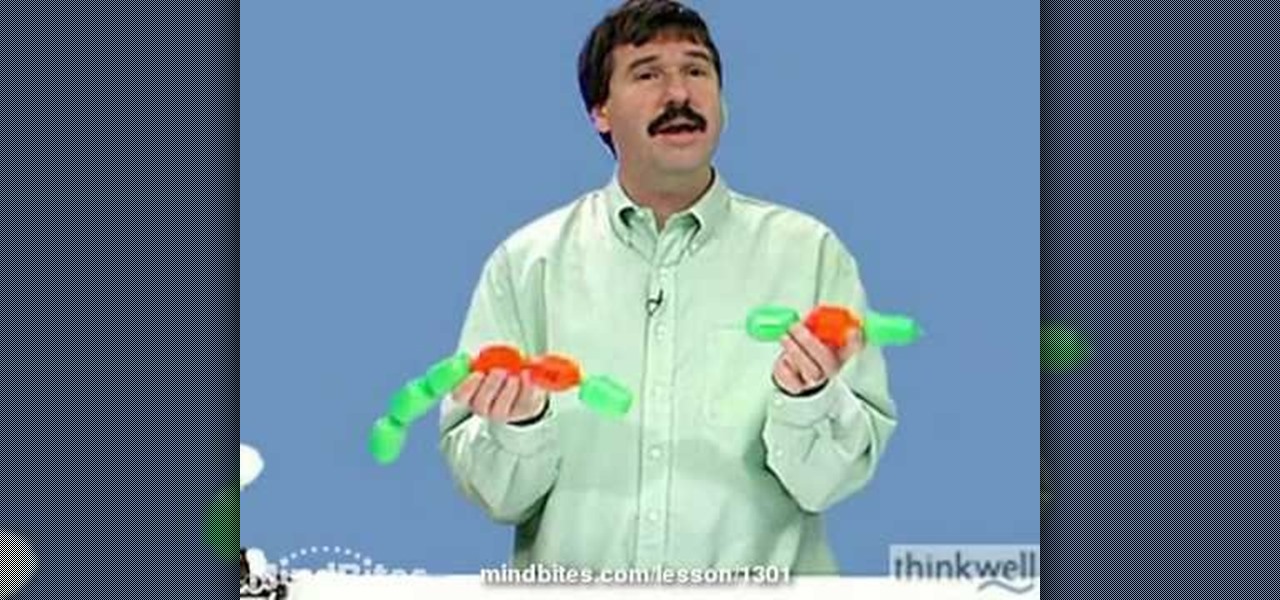
How To: Describe chemical formulas
This is a video tutorial in the Education category where you are going to learn how to describe chemical formulas. A chemical formula represents the actual number of atoms of each element within a molecule. Different visual representations of molecules include the ball and stick three dimensional model, a line drawing that represents the structure in two dimensional terms, and a shorthand used by organic chemists. If a molecule has 4 green atoms and 2 orange atoms, the ratio of green to orang...
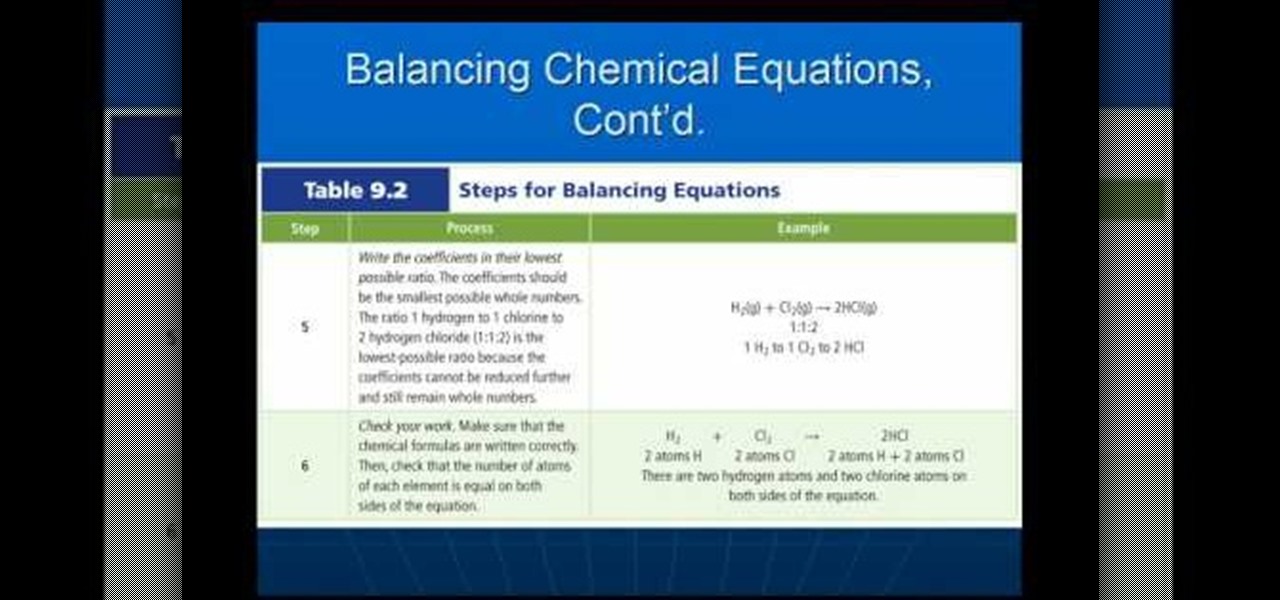
How To: Balance chemical equations properly
In this video we learn how to balance chemical equations properly. What is a chemical equation? It's a statement that uses a chemical formula to show identities and relative amounts of the substances involved in a chemical reaction. To balance an equation out you must have the same number of atoms on both sides of the chemical equation. Or, you must have the same amount of mass or matter on both of the sides. Once you have these balanced out so they are the same then you will have it complete...
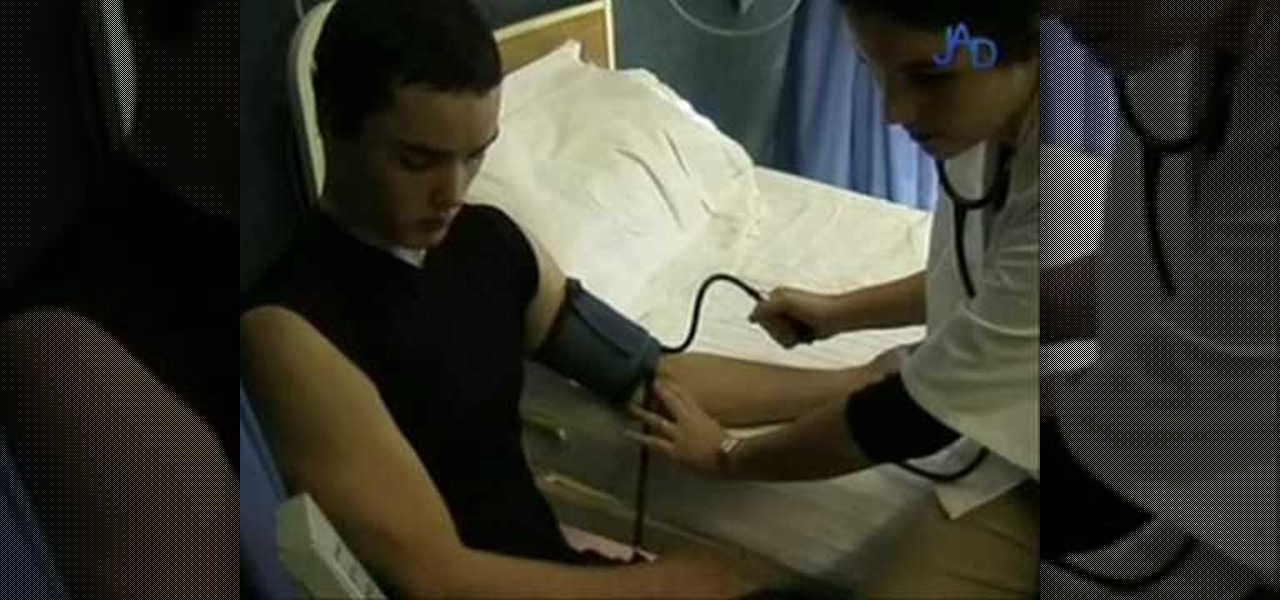
How To: Check blood pressure
In this video we learn how to check blood pressure. First, ensure that the patient is relaxed the cuff is empty of all air. The arm should be held at the level of the heart. The doctor will then start to pump air into the cuff to inflate it. The doctor will do this until the pulse is not felt anymore. The pressure of the cuff will start to raise, then they will slowly reduce the air from the cuff. The doctor will listen to the flow of blood through the artery as the air is leaving the cuff. N...
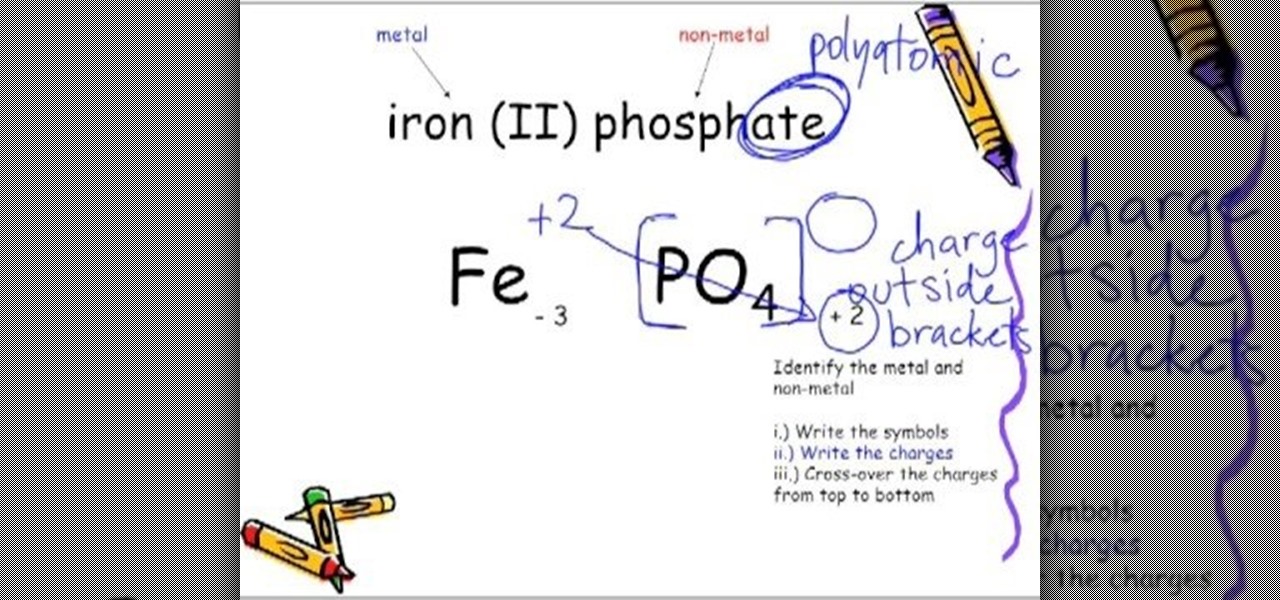
How To: Understand polyatomic chemical formulas
This is a video tutorial in the Education category where you are going to learn how to understand polyatomic chemical formulas. When writing the formula using polyatomics, the same cross-over rule applies. 1st identify the metal and non-metal. Then you write the symbols, write the charges, cross-over the charges from top to bottom, remove the charge and simplify the numbers and remove the 1s. for example, iron (II) phospahate. The "ate" ending implies that phosphate is polyatomic. The symbol ...
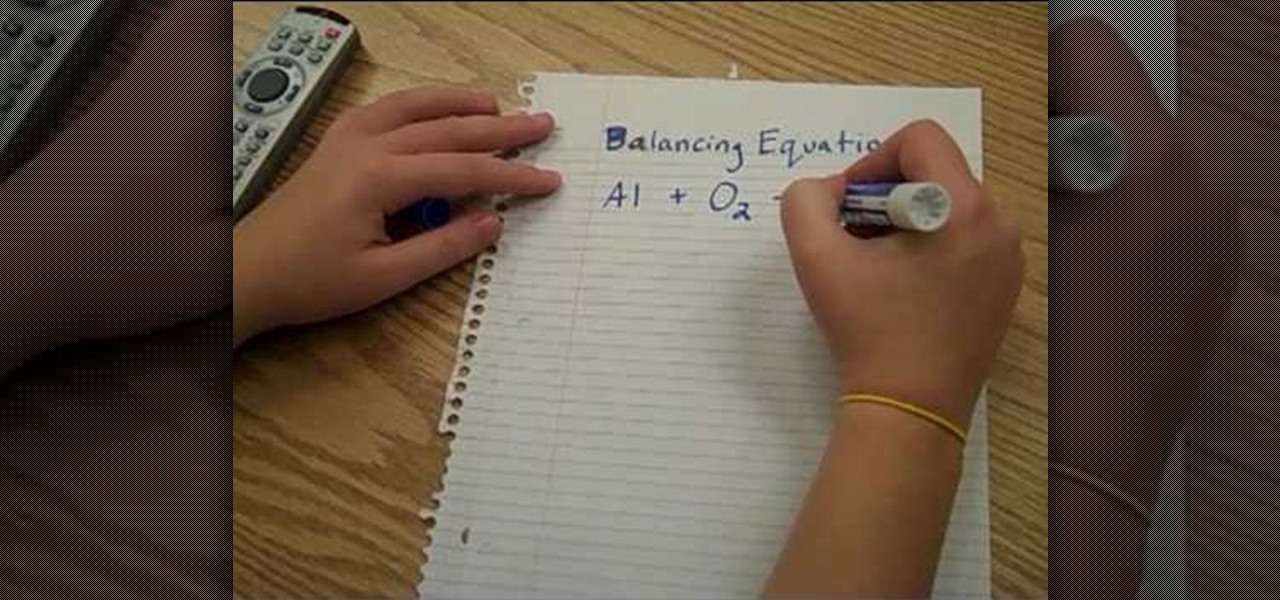
How To: Balance chemical equations the fun way
In this video we learn how to balance chemical equations the fun way. First, remember that matter cannot be created or destroyed. Take two different types of chemicals and put them on opposite sides of the equation. If you have more mass on one side than the other, these will not balance out. Once you have equal amounts of mass on both of the sides, you will be able to balance the chemical equation. Remember this rule whenever you are balancing out chemical equations. Use visual markers to he...
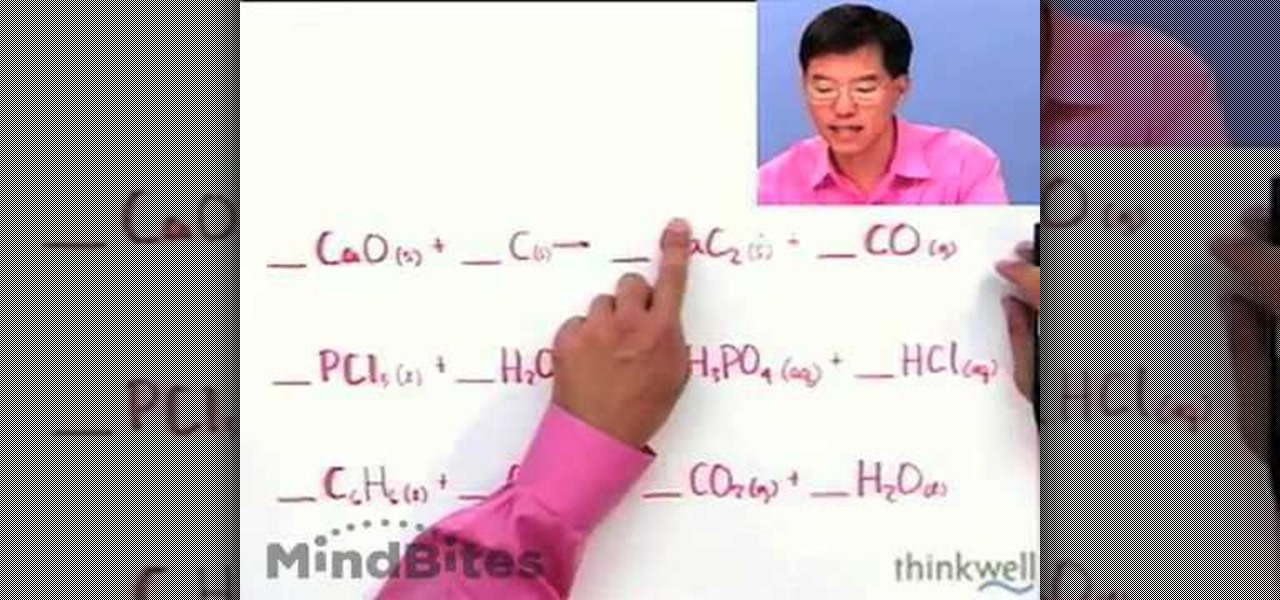
How To: Easily balance a chemical equation
In this video, we learn how to easily balance a chemical equation. In a balanced equation, there should be the same number of atoms on both sides of it. There are no rules that explain how you get a balanced reaction from expression. First, start on the molecule or compound that is the most atomically complex. After you look at this, you can learn how to make the rest of the equation equal to each side. This is a complex process that you must walk through to figure out, but it will result in ...
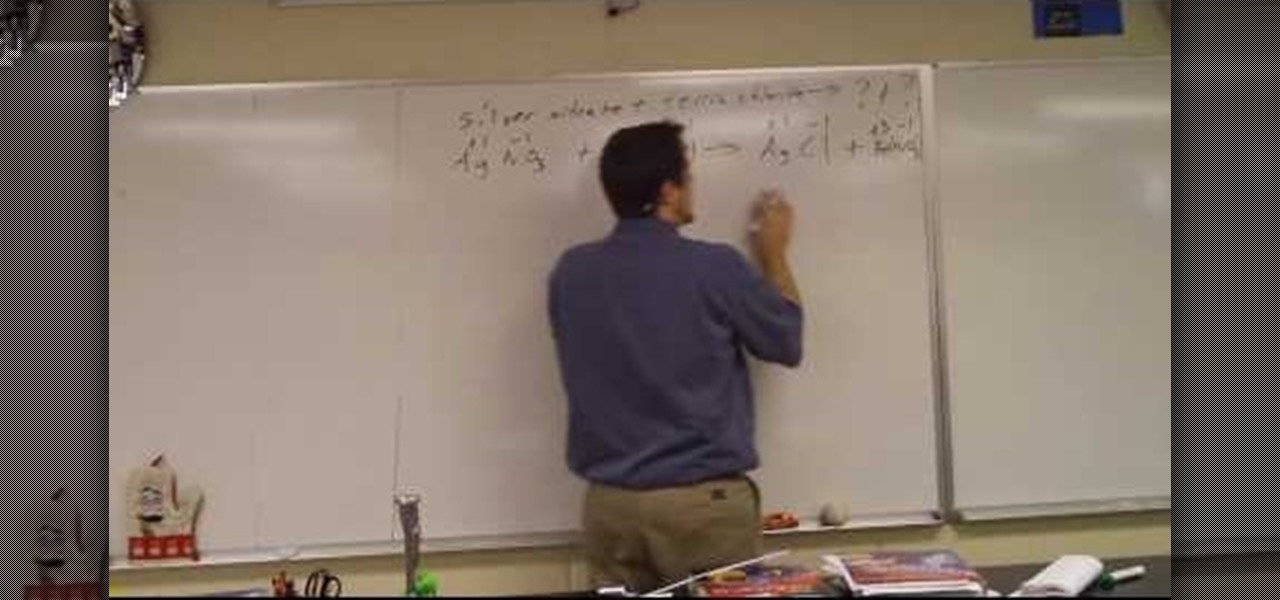
How To: Balance a chemical equation step-by-step
This is a video tutorial in the Education category where you are going to learn how to balance a chemical equation step-by-step. The left side of the equation is called the reactants and the right side is the new products. What will be new products when silver nitrate reacts with ferric chloride? The left side will be written as Ag NO3 + Fe Cl. The valence of Ag is +1, NO3 is -1, Fe is +3 and Cl is -1. On the right side the silver cannot go with iron because both are positive. So, it will be ...
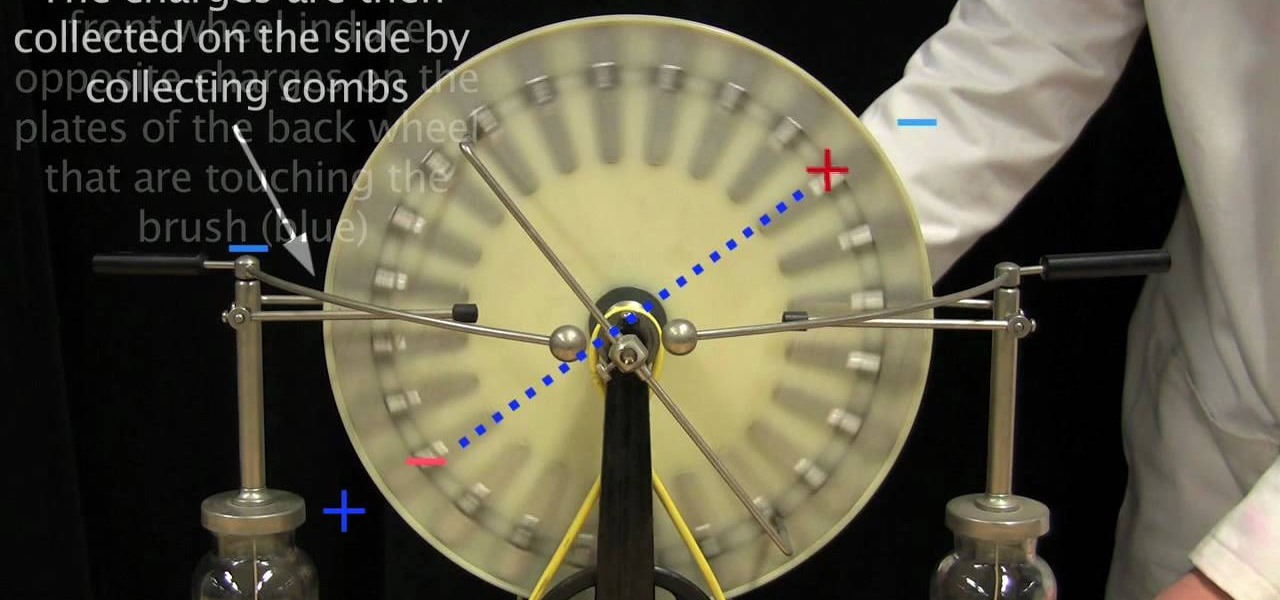
How To: Use high voltages using the Wimhurst machine
In this video, we learn how to use high voltages using the Wimhurst machine. First, you must have a spinning wheel, double ended brushes, collecting combs, leyden jars, adjustable electrodes, and small metal plates. Once you connect all these together, you will notice the brushes on either side are perpendicular to each other and the wheel spin in opposite directions. Spin the wheel and then listen to the sound it makes. The plate will then charge with different electrons and create positive ...
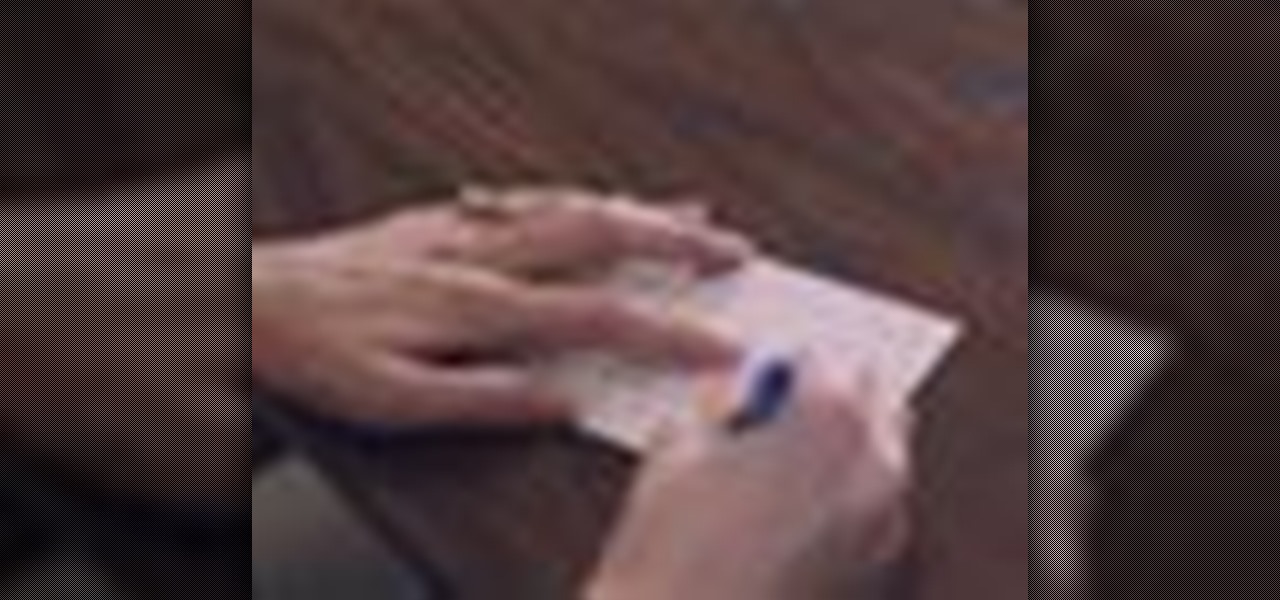
How To: Make great flash cards and study better for your next test
The flash card is one of the most effective and distinctly old-school methods of studying. If you want to eschew the computer and bust out the flash cards, watch this video to learn some ways to make more effective flash cards and rock your next test.

Do Not Try This at Home: Exploding Hydrogen Bubbles
Here at WonderHowTo, we love science. And of course, explosions. So, naturally we find Gray Matter's demonstration of fiery hydrogen bubbles pretty awesome. But the most interesting part is the reason behind the demonstration. Did you know the same gas that heats your house can also make it explode? Gray Matter explains why:
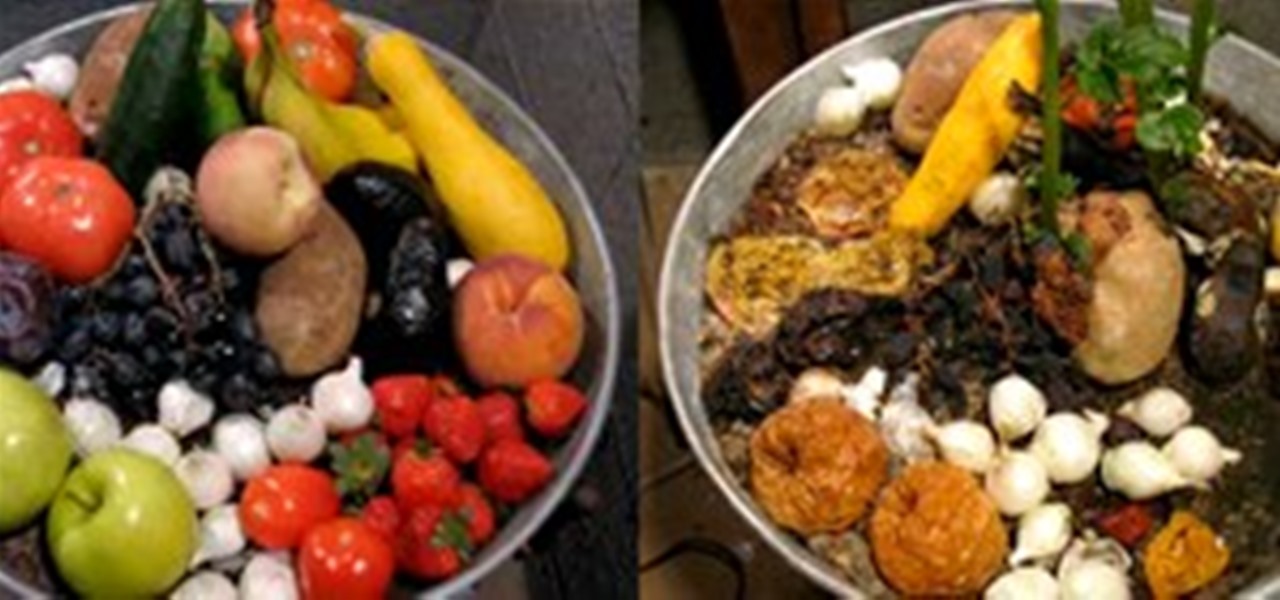
News: 74 Days of Nasty Time-Lapsed Food Rot
We've seen 13 days of decomposition... how about 74? More compost nastiness + time-lapse. Previously, 13 Gloriously Disgusting, Maggot Filled Days of Rotting Food.
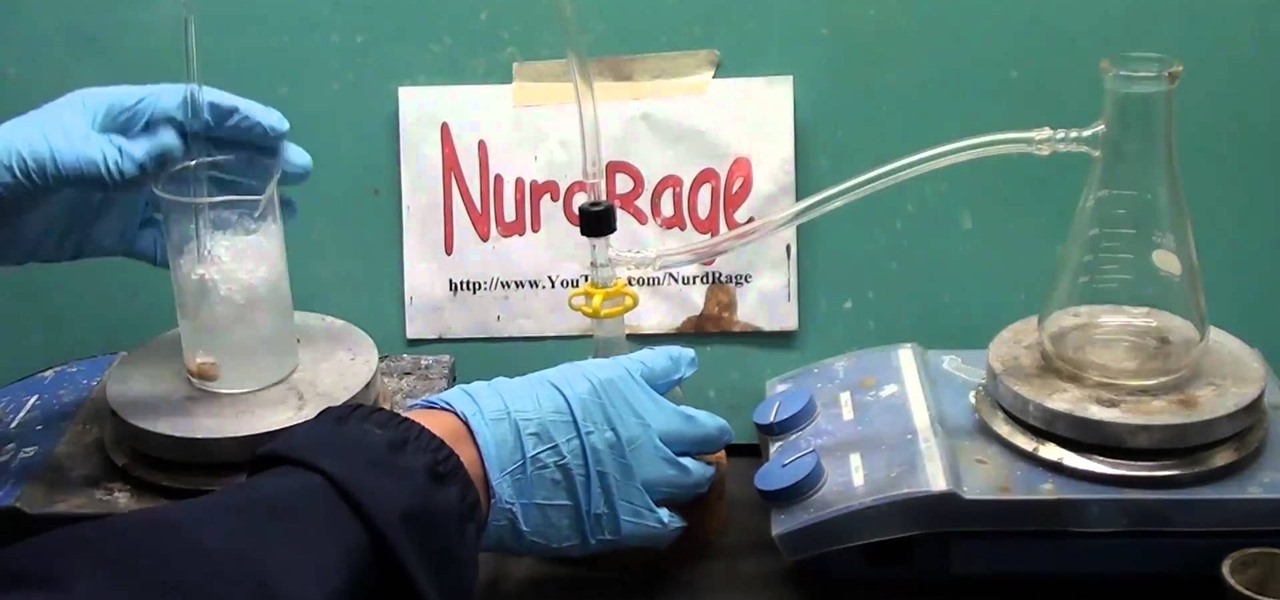
How To: Make hydrochloric acid from sodium bisulfate and table salt
In this home-science tutorial from WonderHowTo favorite Nurdrage, you'll learn how to create hydrochloric acid using 140 grams of sodium bisulfate, a pH lowering compound available in most pool stores, and 60 grams of sodium chloride salt and an external heat source. Watch for a full demonstration of the process and complete, step-by-step instructions.

News: Make a tomato glow in the dark
Gather all Mad Scientists. Science doesn't have to be all about hitting the books and memorizing formulas. Sometimes it's closer to Frankenstein or Dr.Jekyll than you can imagine. It's time to turn tomatoes into glow in the dark orbs.
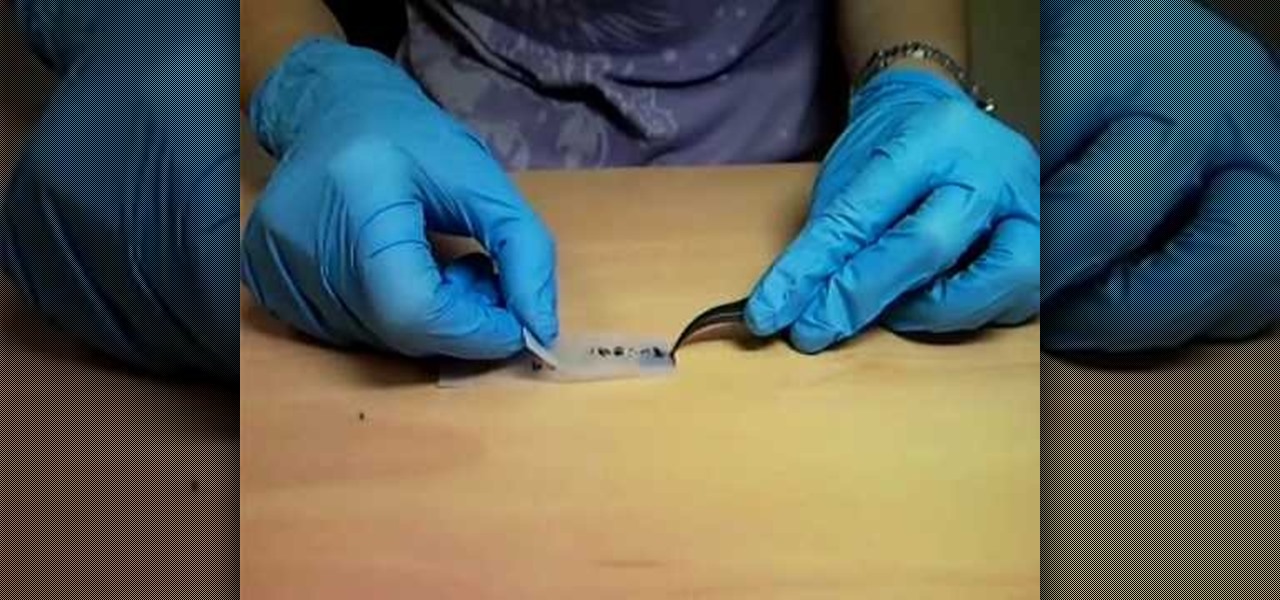
How To: Make graphene sheets from graphite flakes and cellophane tape
Andre Geim and Konstantin Novoselov, from the University of Manchester, have just won the Nobel Prize in physics from their work with graphene. They've found a way to isolate graphene from graphite (carbon in pencil lead) and distinguish its behavior, which holds extreme potential for future technology.
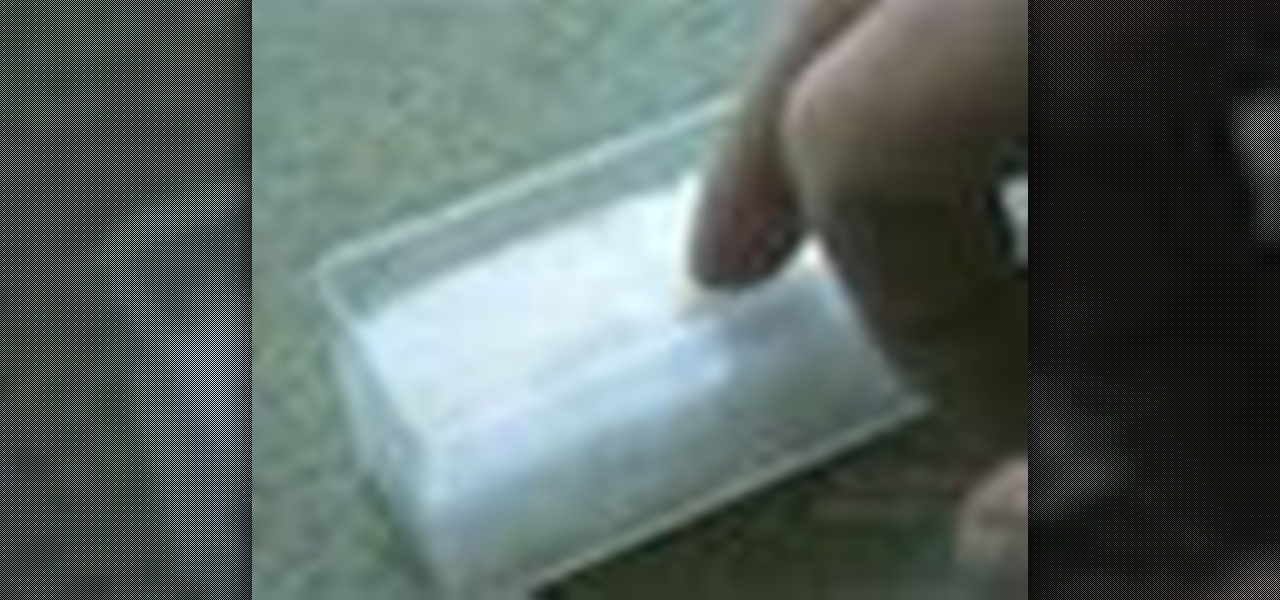
How To: Instantly make hot ice
Watch this amazing video tutorial to learn how to instantly make ice. This is a simple experiment turning a liquid to a solid with just a touch. Just find some sodium acetate and water to start. Boil it, then chill it, then touch it! And in an instant you have ice! If you want to be creative (or you're just bored on a Sunday afternoon) you can pour some ice sculptures to amaze children of all ages. Check out this awesome how-to video and cook up some hot ice.
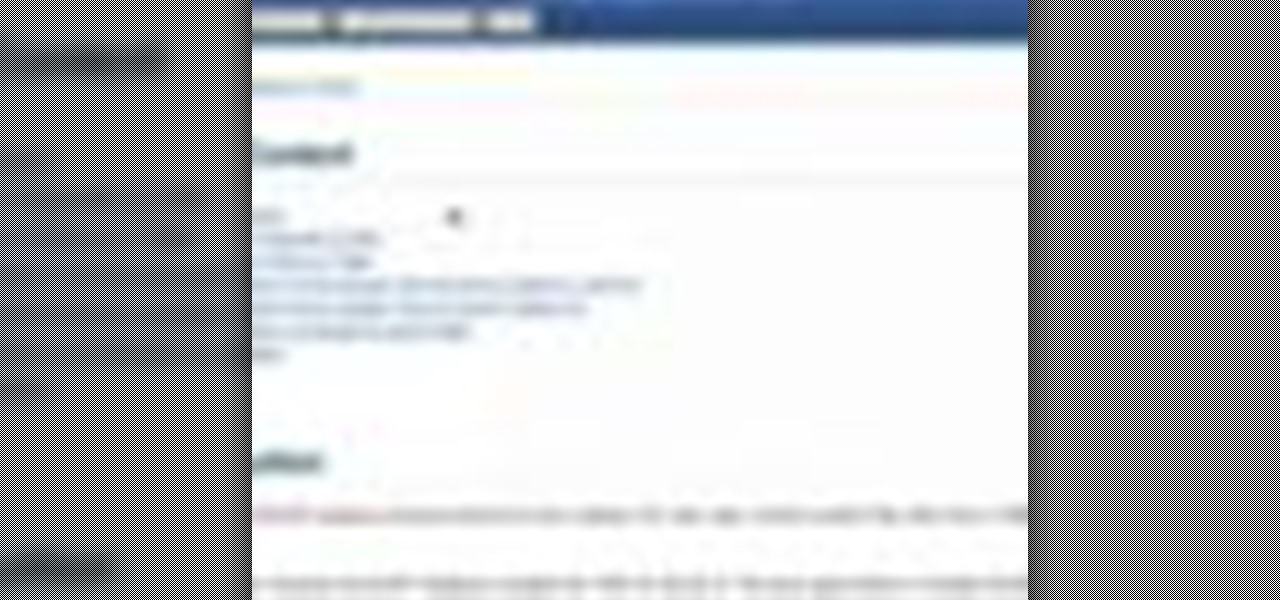
How To: Use the BLAST search on the NCBI website to search for gene sequence matches
If you're involved in biomedical research, identifying gene sequences might form a large part of your job. The NCBI's website contains a powerful search tool called BLAST that allows you to search for matches to any gene sequence you enter, and this video will show you how to use it.
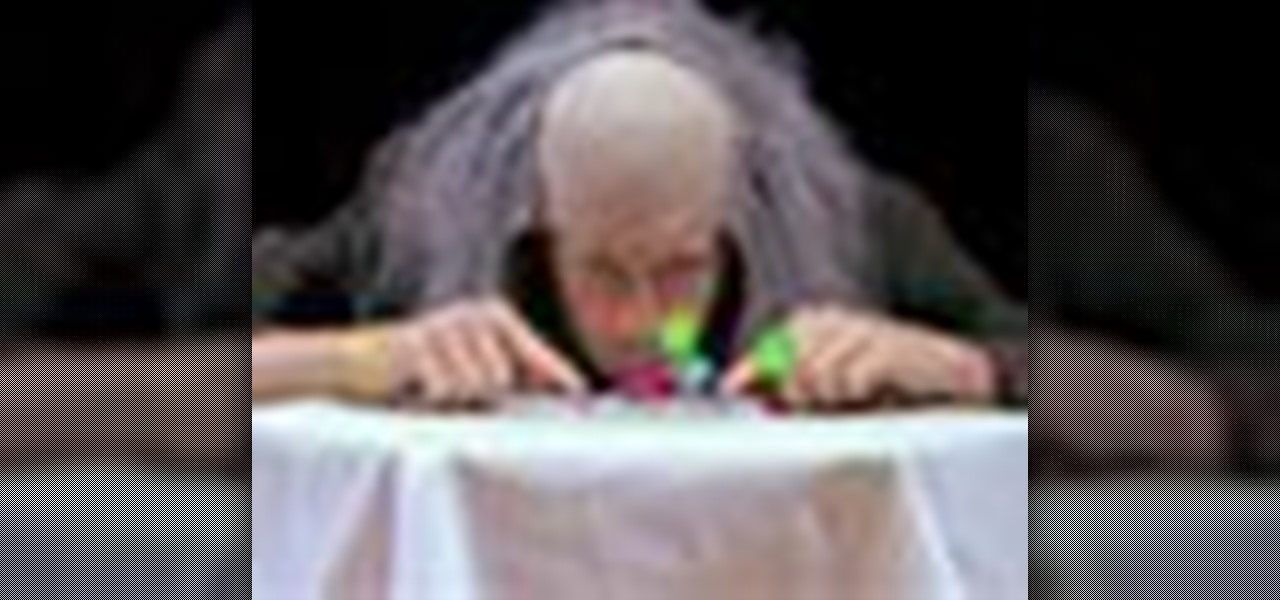
How To: Perform an experiment in accordance with the scientific method
The scientific method is one of the great constructs of modern academic thought. If followed rigorously it makes science as accurate as any general procedure can make it. Watch this video to learn the steps of the method and how to use it to conduct your own experiments.
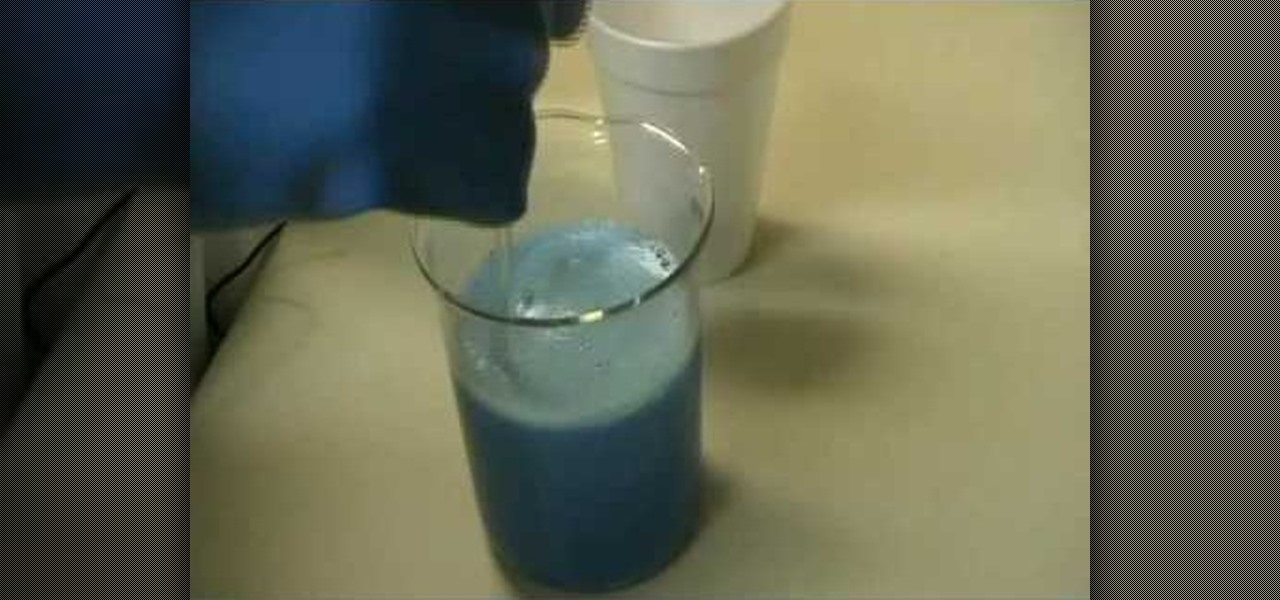
How To: Synthesize copper(II) carbonate & sodium bicarbonate
This actions is a video tutorial in the Education category where you are going to learn how to synthesize copper(II) carbonate & sodium bicarbonate. For this you will need copper sulphate which is available in root kill and sodium bicarb which is baking soda. Take 100g of copper sulphate and dissolve in about 400ml of water. Now take 69.27g of baking soda. Add baking soda very slowly and keep stirring the solution. You got to be very careful as the chemical reaction will produce lot of carbon...
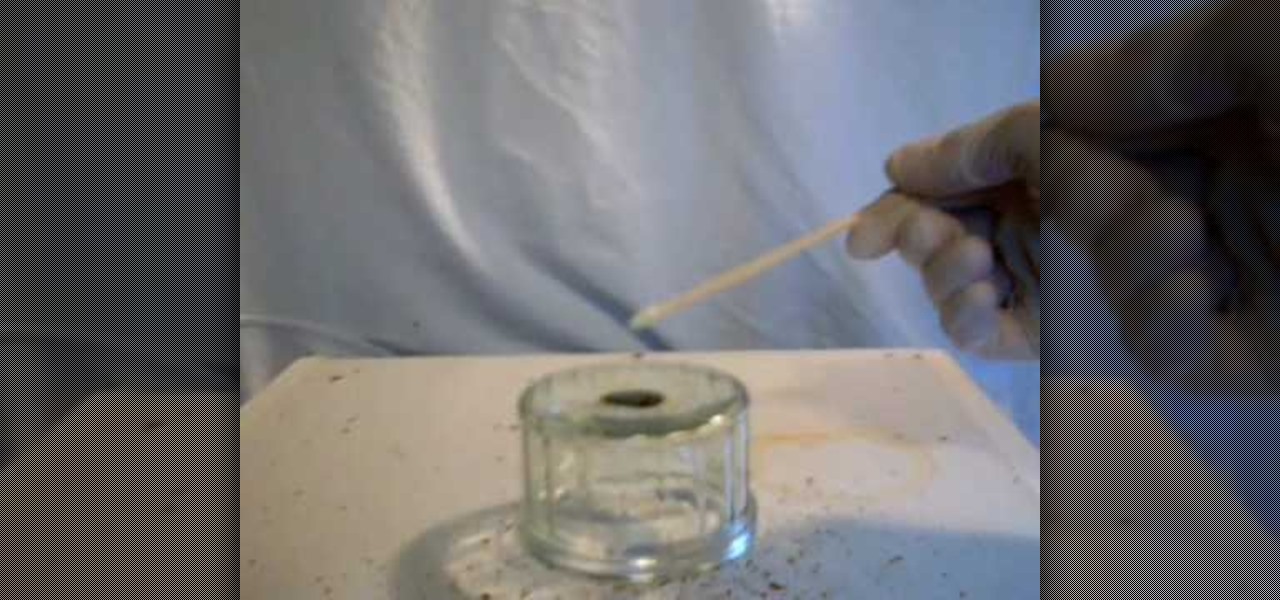
How To: Make maganese heptoxide (permanganic acid)
This video tutorial is in the Education category which will show you how to make manganese heptoxide (permanganic acid). This procedure is extremely dangerous. Manganese heptoxide is an extremely powerful oxidizing agent. It has the ability to set fuels on fire from mere contact. Get an old dish and put a spatula full of potassium permanganate on it. Add a few drops of concentrated sulphuric acid. A green liquid is formed which is the manganese heptoxide. Now you can add any fuel like butanol...

How To: Bend and fuse glass over a flame
In this tutorial, we learn how to bend and fuse glass over a flame. First, you will need to have a Bunsen burner turned on with a high flame. After this, let the flame stay on for several seconds, then adjust the airflow for the flame so it doesn't go too high. Now, find glass and pick it up on the bottom with your hands. Stick the tip of the glass into the bottom part of the burner, where the flame is the hottest. The piece of glass will turn orange in color as it gets hotter and hotter. Onc...
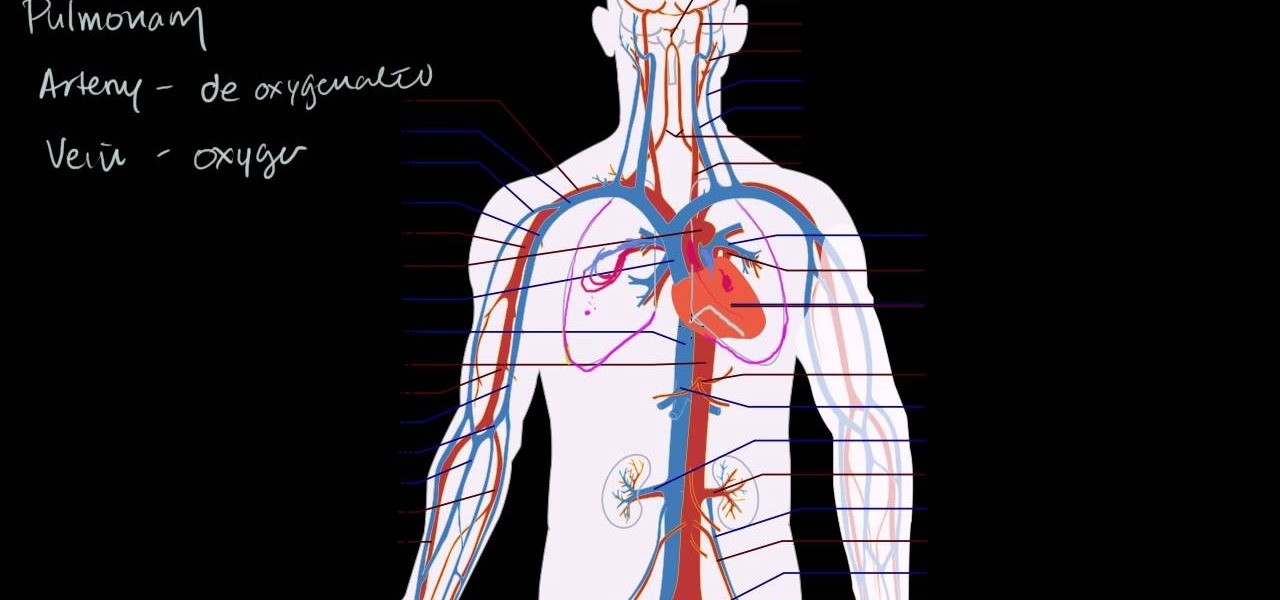
How To: Understand the circulatory system & the heart
Want to learn more about the circulation of blood through the heart and the rest of our body. Watch this video.

How To: Test paint for the presence toxic lead
In this tutorial, we learn how to test paint for the presence toxic lead. You will first need to make up two solutions. One will need sodium sulfide and water mixed together in a small container. Then, add acidic acid and water into another container. Drop small amounts of the mixtures into containers, then add in the paint to the containers. Watch and see how the reaction of the paint is with the mixture. If you start to see a black reaction occur in the container, you will know that your pa...
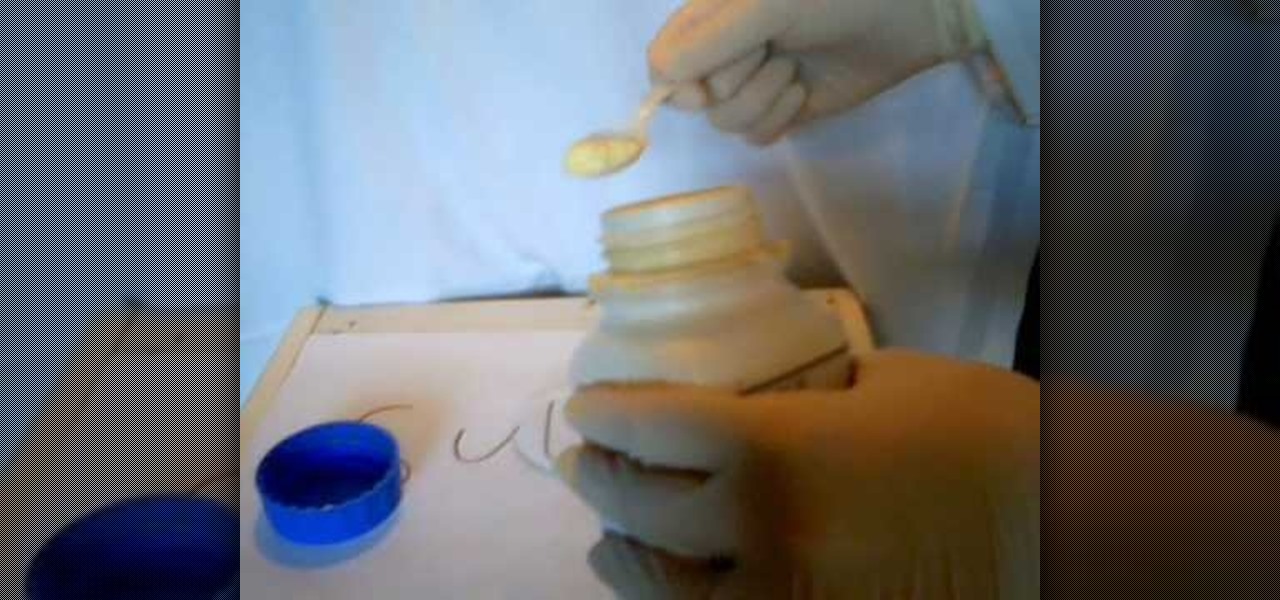
How To: Change the physical properties of yellow sulfur
In this tutorial, we learn how to change the physical properties of yellow sulfur. First, take a heat proof water glass and add in 1 teaspoon of sulfur powder. After this, heat the glass on a low flame for a few minutes. After this, the sulfur will start to melt and turn a reddish color. Now, pour the sulfur into some cold water after it's all the way melted and watch the reaction that is occurring. Once cool, you will be able to pick up the sulfur from the water and play with it, although it...
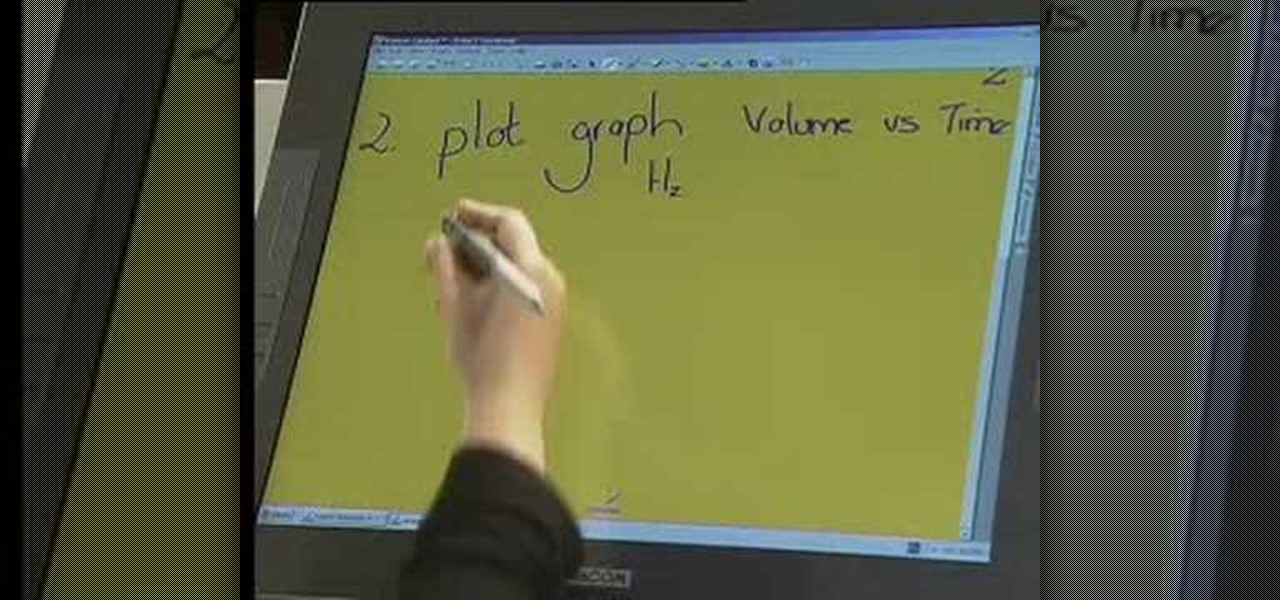
How To: Understand chemistry & chemical change
This video tutorial is in the Education category which will show you how to understand chemistry and chemical change. The question here is 10g of Mg ribbon reacts with 0.15 mol decimeter cubed of hydrochloric acid at 25 degree Celsius. What is the balanced equation for this reaction? When magnesium reacts with hydrochloric acid, you will get magnesium chloride and hydrogen. So, the equation will be Mg + 2HCl = MgCl2 + H2. Mg is in group 2 of periodic table and has a valance of 2, whereas Cl i...
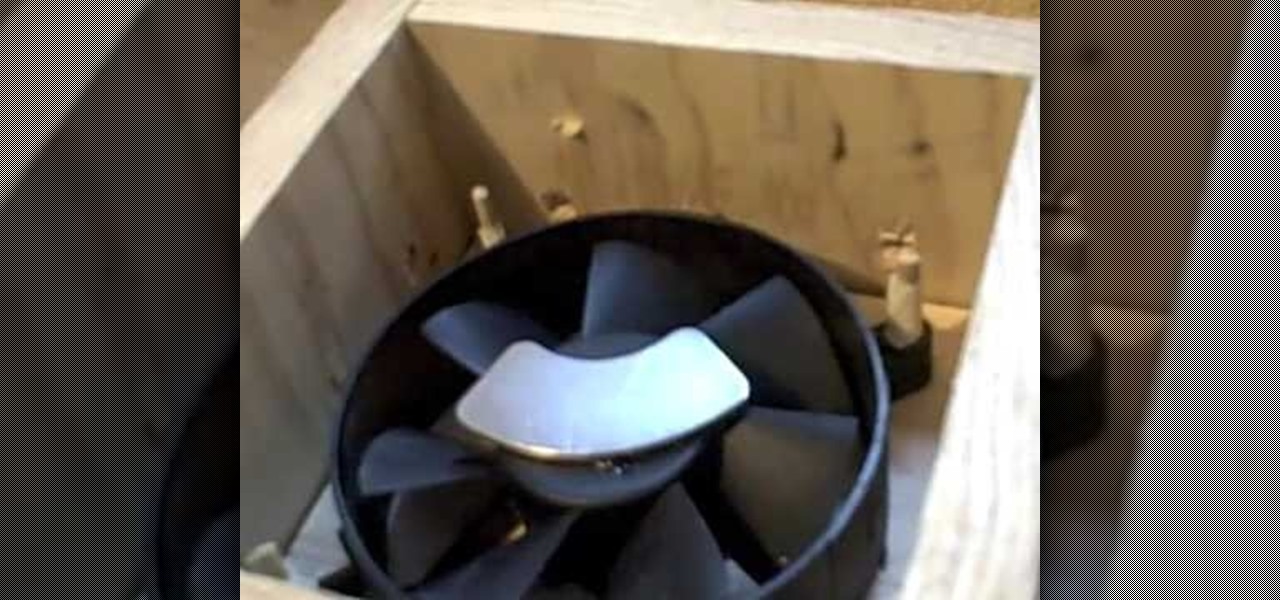
How To: Build a magnetic stirrer from computer parts
In this tutorial, we learn how to build a magnetic stirrer from computer parts. This is a simple thing to make, and is great if you are going to be mixing chemicals and don't want to get your hands dirty. First, you will need to create a wooden box with the top empty. Then, place a computer fan into the middle of the box and pin it down. Place a magnet from the hard drive in the middle of the fan, then place a stirring rod on the glass that will go on the top of the wooden box. Now you will b...
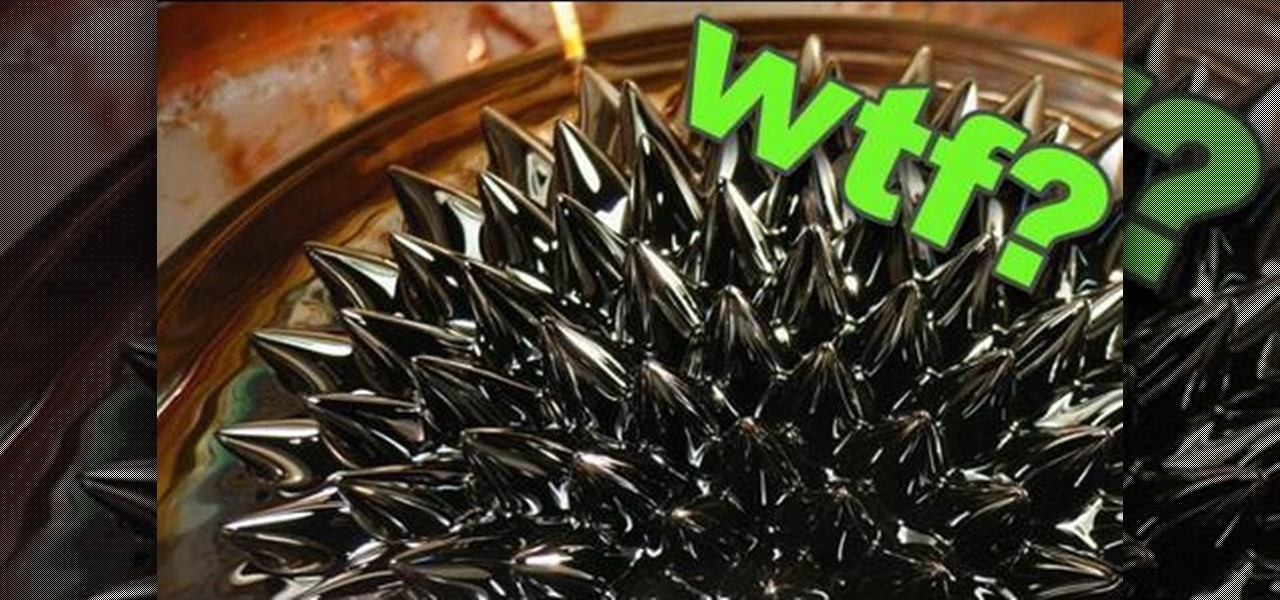
How To: Make a ferro fluid
In this video, we learn how to make Ferro fluid. This is a magnetic fluid that you can easily make at home. To do this, you will need: laser jet toner, rare earth magnet, and some vegetable oil. Now, pour the toner into a cup (50 ml), then put 2 tbs of vegetable oil into this cup as well and stir it together until you have a thin consistency. Now, transfer into a smaller jar so you can handle it easier. Now test this fluid by taking the earth magnet and putting it to the bottom of the jar. No...

How To: Make a miniature vortex cannon
This is a video tutorial in the Education category where you are going to learn how to make a miniature vortex cannon. For this you will need normal plastic drinking cup, punching bag type balloon, black electrical tape, lighter, candle, scissors and a drill. Drill a hole in the bottom of the cup and cut off a big circle at the bottom. Cut the punching bag balloon in half and stretch it over the mouth of the cup and tape it up nicely. The cannon is ready. Now light the candle, hold the cup aw...
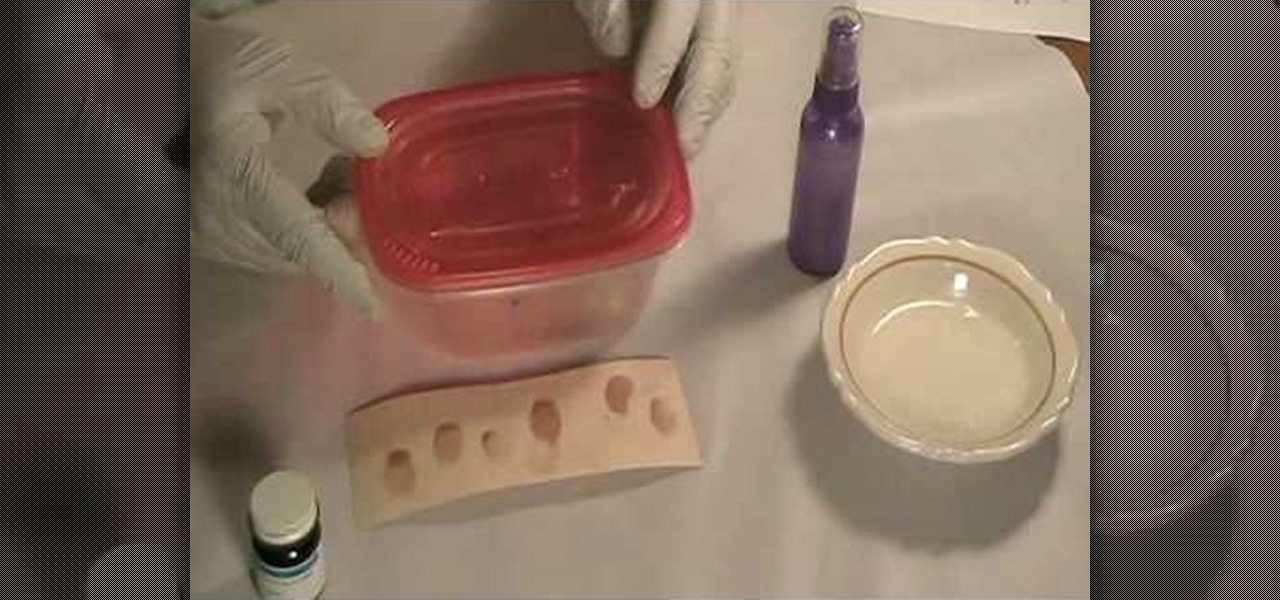
How To: Reveal latent fingerprints on paper & other surfaces
In this tutorial, we learn how to reveal latent fingerprints on paper & other surfaces. The item you will need to do this is crystal iodine and plastic sheeting to protect your work surface. Place your specimen into a plastic container with the iodine, then put the top on and let sit, placing your hand under to warm it up. Within a few minutes you will see a violet color vaporizing in the container. When finished, you will be able to take out your specimen and see the fingerprints that are al...

How To: Understand the hemoglobin & its role in the body
An in-depth explanation of the structure of the hemoglobin molecule, the process by which it binds with the oxygen in the lungs, how it dumps the same oxygen molecule at the appropriate location in the body and how carbon-dioxide gets attached to the hemoglobin molecule are the topics which the narrator in this video explains with diagrams and a few equations.
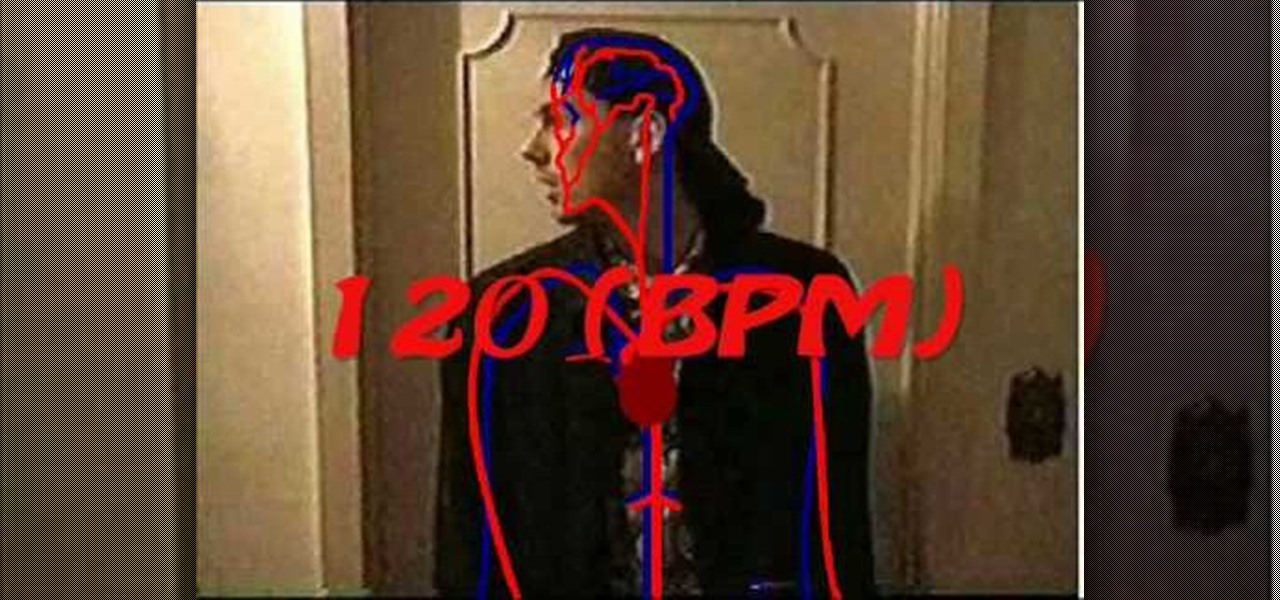
How To: Find your recovery heart rate
In this tutorial, we learn how to find your recovery heart rate. First, get your heart rate up by doing some sort of activity that you enjoy doing. After you have your heart rate up, figure out how many beats you have in fifteen seconds. After you have counted this, multiply it by four. Now, sit back and relax for two minutes exactly. Next, time another fifteen seconds with your stop watch and count how many beats your heart has. Multiply this number by four, then subtract the two numbers. Af...

How To: Use & understand chemical equilibrium in chemistry
This is a video tutorial in the Education category where you are going to learn how to use and understand chemical equilibrium in Chemistry. This video answers a question about the contact process. This is a process by which sulphuric acid is made where they take sulphur, react it with oxygen to make sulphur dioxide and react it with more oxygen to make sulphur trioxide. The equation here is 2SO2 + O2 will give us 2SO3. This reaction is exothermic, that means it will give out energy in the fo...
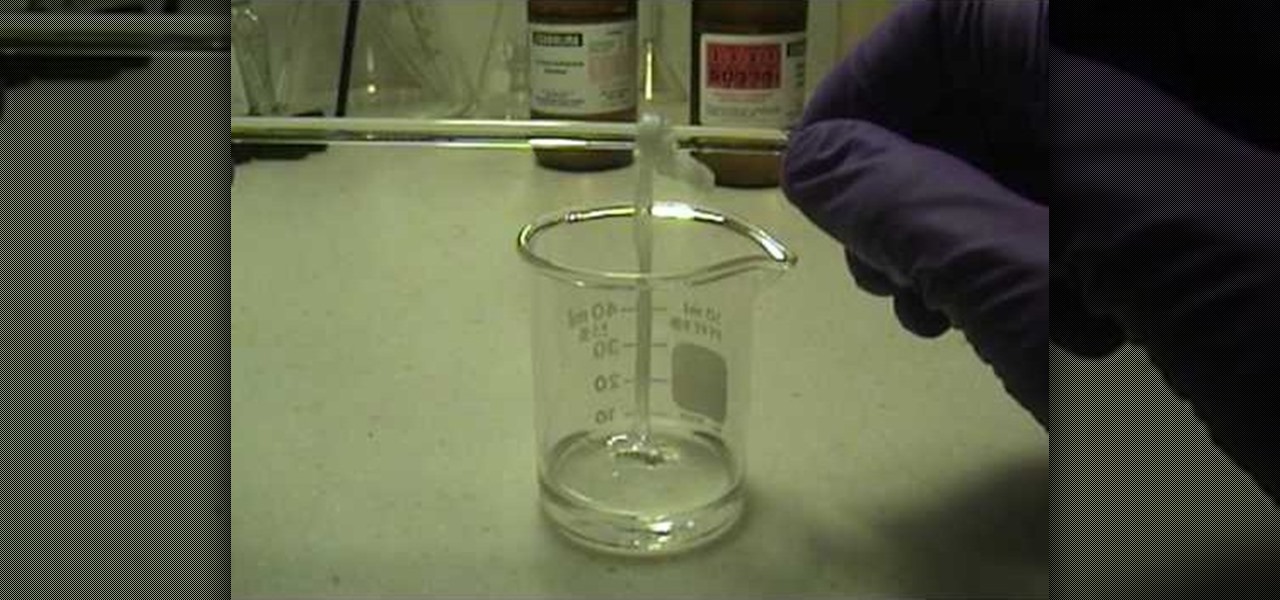
How To: Make your own nylon
In this tutorial, we learn how to make your own nylon. You will need: pipettes, pipette filler, forceps, beaker, stir rod, sebacoyl chloride and hexanediame solution. Now, pour some of the hexanediame solution into the small beaker. Add in a food coloring if you want to make this a specific color. After this, add in 4 cc's of sebacoyl chloride and carefully drip into the side of the beaker. You should see a layer of where the two liquids are after this. Now, take your tweezers and reach into ...
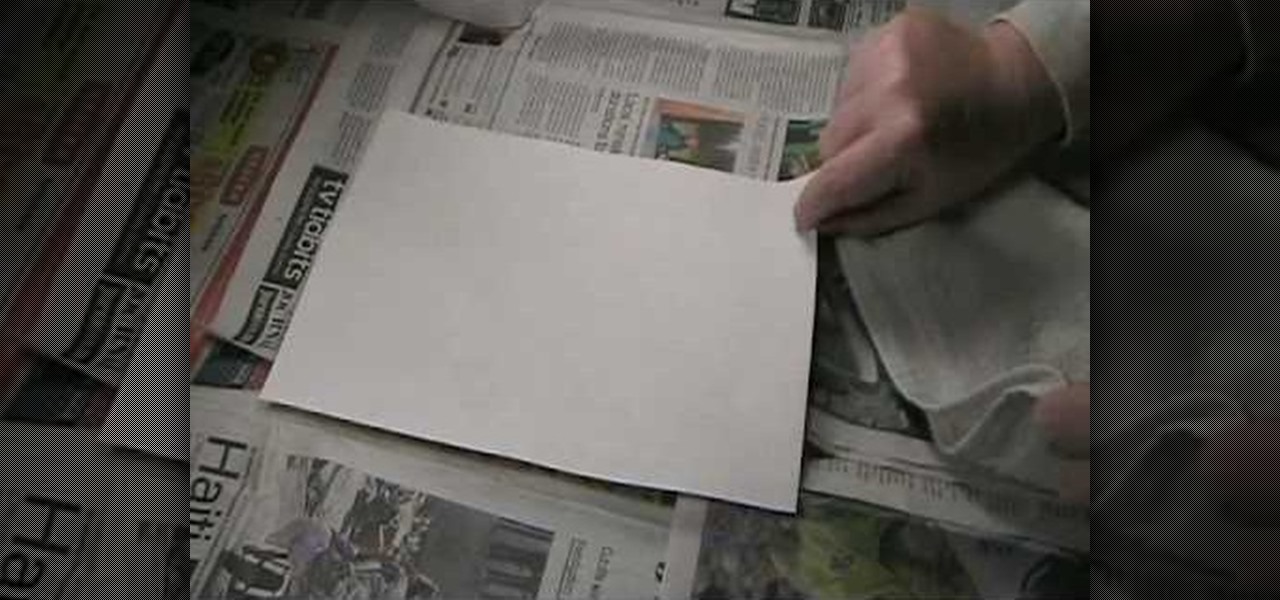
How To: Use ninhydrin to reveal latent prints on paper
In this tutorial, we learn how to use ninhydrin to reveal latent prints on paper. This will work out because you will be spraying a special liquid onto the porous area. After this, you will turn on a black light and then be able to see the fingerprints appear in purple! Be careful with the solution, because it's flammable! This will also stain your skin, so make sure you wear gloves and don't let it contact a surface you don't want stained. To mix the solution, you will combine both of the so...

How To: Explain why the sky is blue through chemistry
Want to know why the sky is blue during the daytime and red during the evening and morning? A simple experiment is all that is needed.

How To: Make boric acid from borax
This is a video tutorial in the Education category where you are going to learn how to make boric acid from borax. For this experiment you will need borax (disodium tetra borate) and conc. hydrochloric acid. Take 25 ml of hydrochloric acid and dilute it with 75 ml of water. Next take 6 - 7 gms of borax and dissolve it in boiling water. Now add equal amount of hydrochloric acid. Crystals of boric acid will start forming. They are completely insoluble in cold water. After about half an hour, fi...
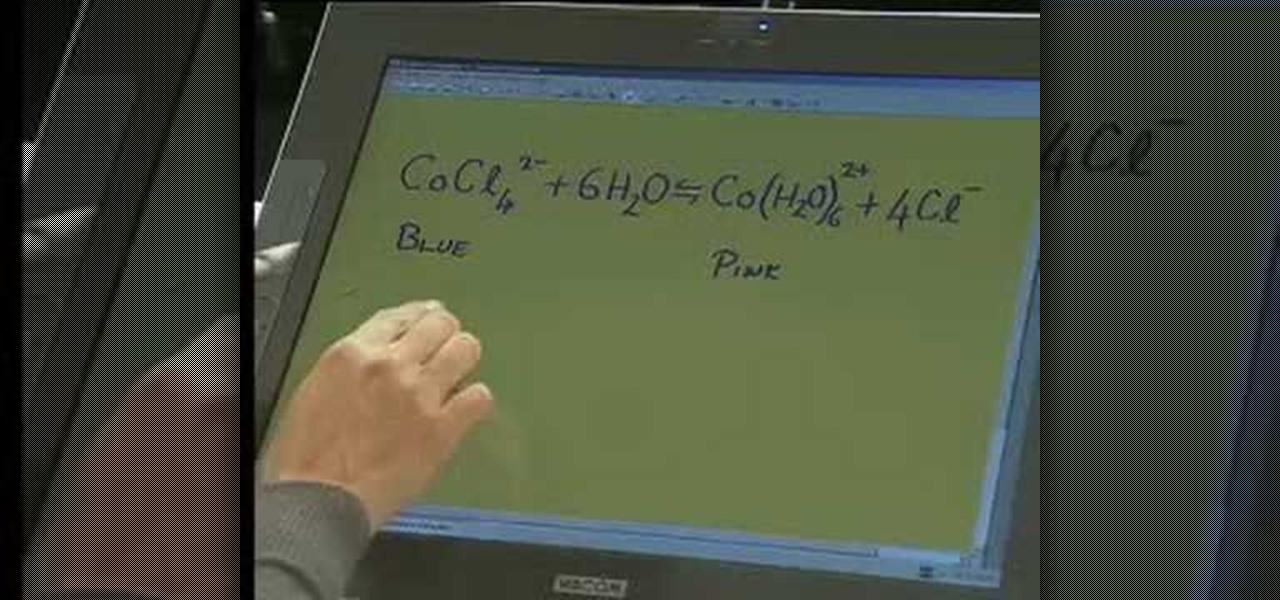
How To: Understand chemistry & chemical equilibrium
A video which shows a reaction in which cobalt chloride reacts with water to form a hydrated form of cobalt and chloride ions.
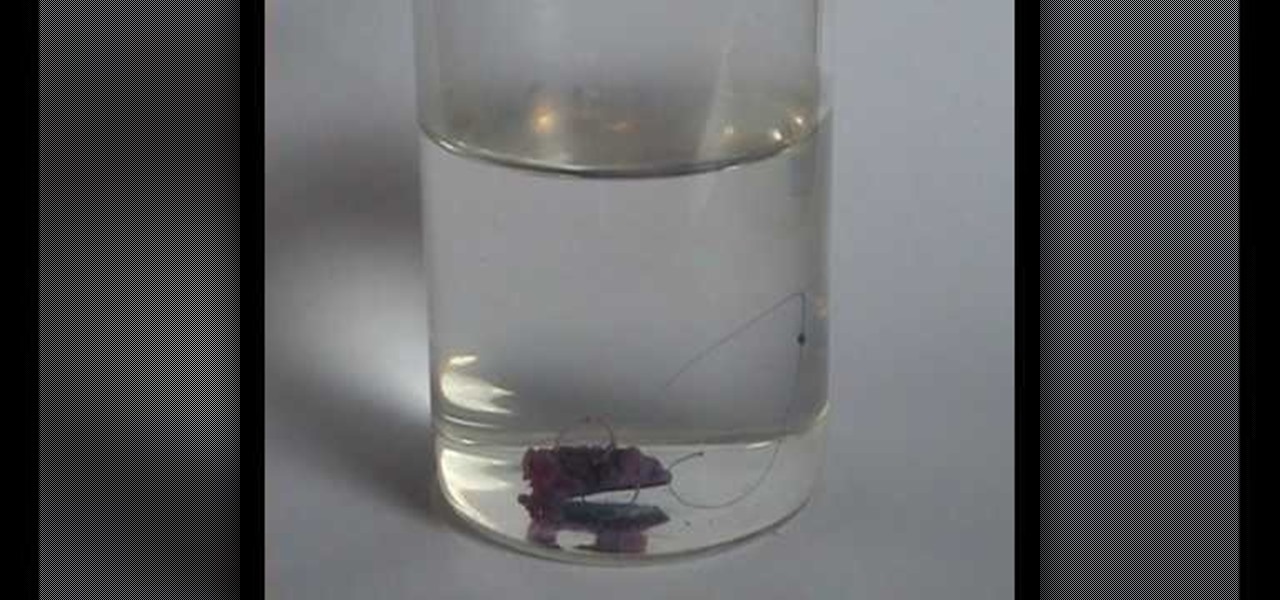
How To: Make silicate salt
In this tutorial, we learn how to make silicate salt. First, you will need to add sodium silicate with boiling water. Keep adding the sodium and then stirring in small amounts until it is completely dissolved. Then, allow the mixture to cool off and add in nickel chloride. You will now start to see a spongy green mixture coming from the chloride which is the nickel chloride reacting with the sodium. Do this again with cobalt chloride and watch the crystals start to form. Watch these grow and ...
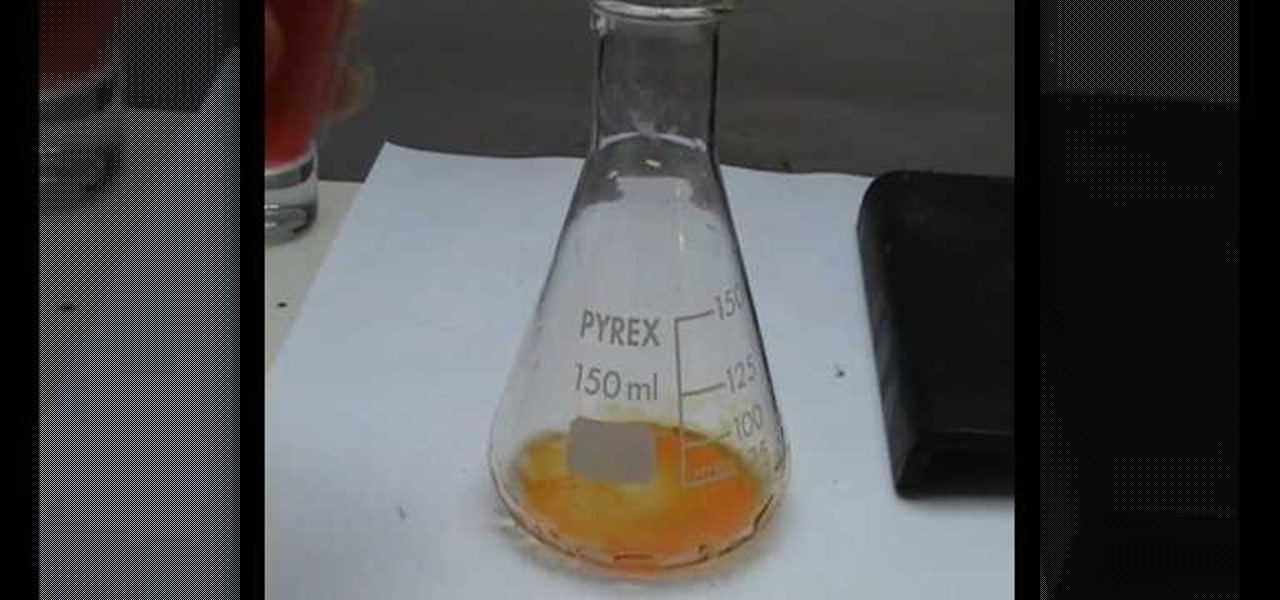
How To: Make a chemical indicator from kitchen items
In this tutorial, we learn how to make a chemical indicator from kitchen items. First, make an indicator by grabbing some red cabbage and some vodka. Now, heat up some water until it's boiling, then place a smaller beaker inside the water with vodka inside of it. Place the red cabbage inside of the smaller beaker, then stir it up and let sit for 10 minutes. A lot of the color will come out with the cabbage being inside of the alcohol. After this, pour this into a storage bottle and pour the w...
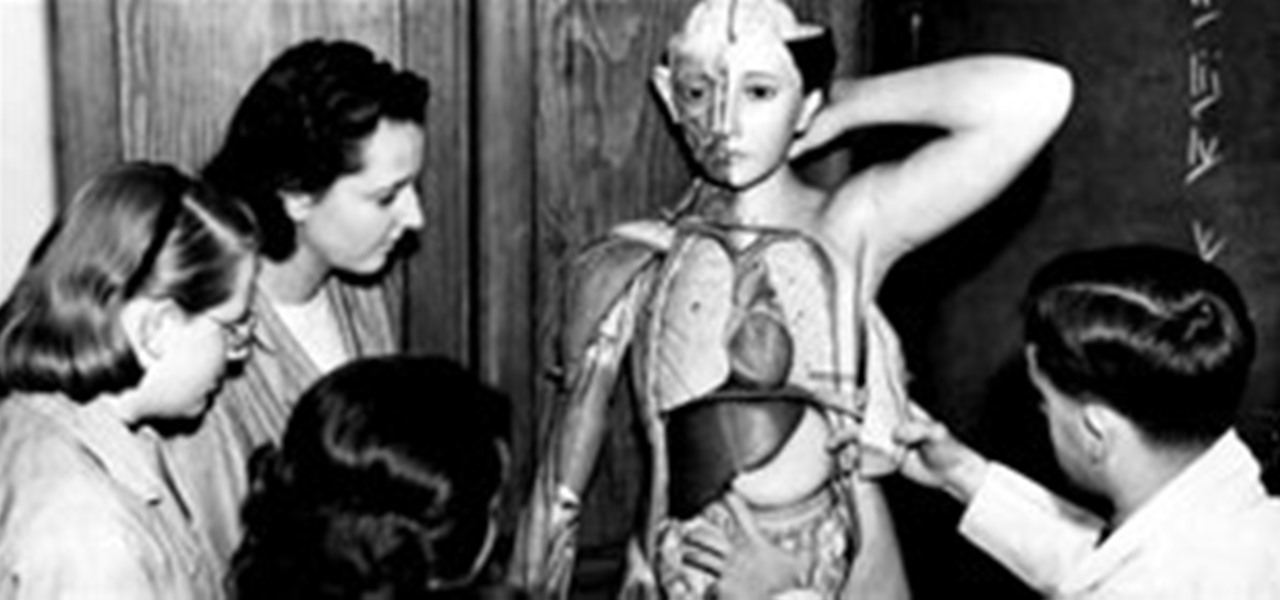
News: Old School Science Models
LIFE magazine has posted a gallery of bizarrely wonderful old school scientific models. Don't miss the giant fetus or massive colon (double ew). Behold, science education before computers ruled our world.
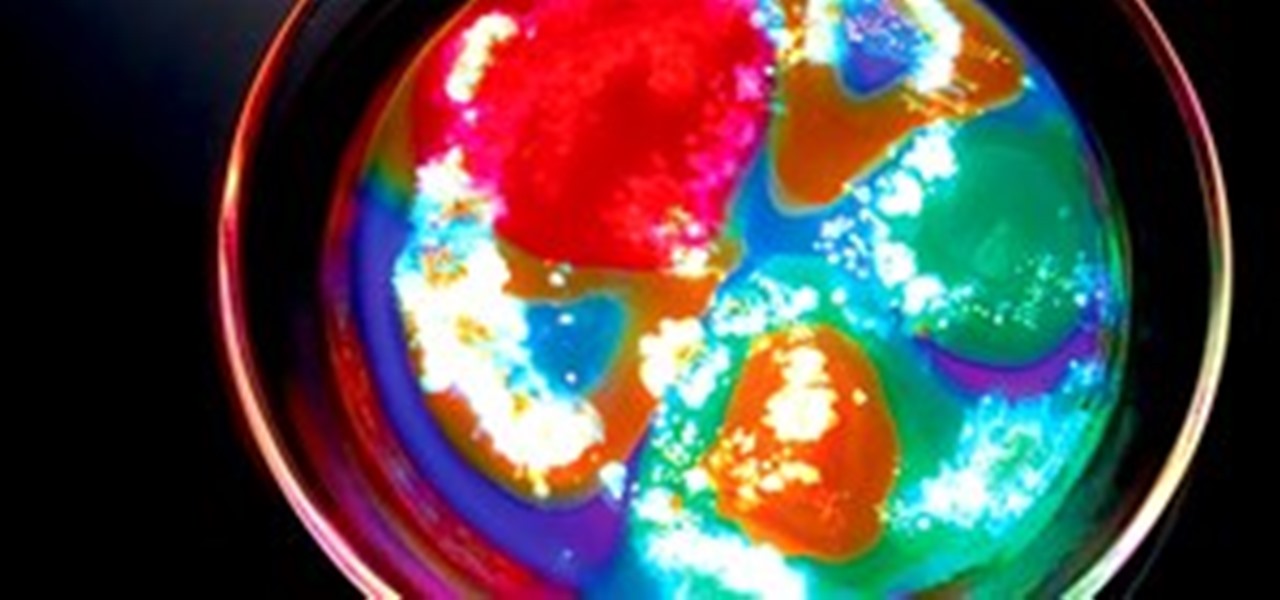
HowTo: Hack Light
PopSci's Gray Matter explains how to "hack light", a simple project that calls for glow sticks, diagonal cutters and Drano. Here's the science behind it:







